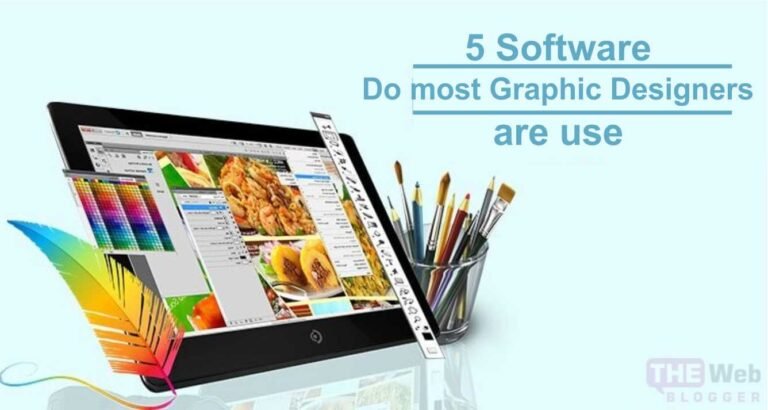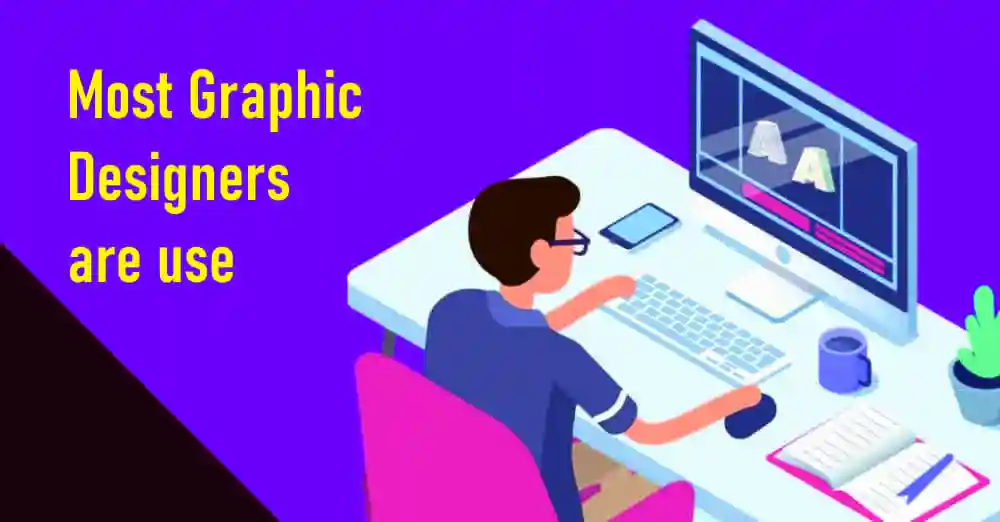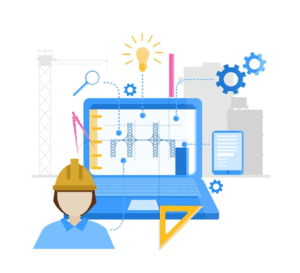5 Software do most graphic designers are use
Posted On July 17th, 2024
Array
Here is a list of the top graphic design software, both free and paid, for artists, all of them are great for creative amazing digital art. The best graphic design software is more diverse than ever, giving experts and amateurs alike a wide choice of alternatives to create in the manner that best matches their demands and workflow.
| S.No | Software | Mainly importance |
| 1) | Adobe Photoshop | The industry standard for photo editing and manipulation. Photoshop offers a vast toolkit for everything from basic edits to complex image transformations. |
| 2) | Adobe Illustrator | The go-to program for vector graphics creation. Illustrator excels at creating logos, icons, illustrations, and scalable designs for various mediums. |
| 3) | GIMP | Any design or PNG picture can easily be transformed into a seamless pattern. |
| 4) | CorelDraw | Largely for marketing and advertising companies, especially those who concentrate on the creation of print advertisements. |
| 5) | Canva | An intuitive platform featuring photo editing, design layout, and more. |

1. Adobe Creative Cloud (Various Apps):
- Adobe Creative Cloud is a suite of industry-standard software applications for graphic design, including:
- Adobe Photoshop: Used for image editing, photo manipulation, and graphic design.
- Adobe Illustrator: Ideal for vector-based illustrations, logos, and typography.
- Adobe InDesign: Designed for desktop publishing, including creating layouts for magazines, brochures, and books.
- Adobe XD: Used for creating user interfaces (UI) and user experience (UX) designs for websites and apps.
- Adobe After Effects: Primarily for motion graphics, visual effects, and animation.
- Adobe Premiere Pro: Often used for video editing and post-production work.
2. Adobe Illustrator
- Vector Graphics: Illustrator is based on vector graphics, which use mathematical equations to define shapes and objects. This allows for scalability without loss of quality, making it ideal for creating logos and graphics that need to be resized for various purposes.
- Drawing Tools: Illustrator provides a wide range of drawing and shape tools, such as the Pen Tool, Pencil Tool, and Shape Builder Tool, which allow users to create complex and precise illustrations.
- Typography: It offers robust text and typography tools, enabling designers to create and manipulate text in various styles and formats. You can also convert text to outlines for further customization.
- Color and Gradient Tools: Illustrator offers a comprehensive set of color and gradient tools, including swatches, gradients, and the ability to create custom color palettes.
- Effects and Filters: Users can apply a variety of effects and filters to objects and text, including drop shadows, blurs, and distortions, to add depth and dimension to their designs.
3. GIMP
- Image Editing: GIMP provides a wide range of tools and features for editing and manipulating raster images. You can adjust brightness, contrast, color balance, and more.
- Layers: Like Photoshop, GIMP supports layers, allowing users to work on different parts of an image independently. This is essential for complex image editing and compositing.
- Selection Tools: GIMP offers various selection tools, including rectangular, elliptical, freehand, and fuzzy selections. Selections can be edited and manipulated separately from the rest of the image.
- Painting and Drawing: GIMP includes a brush tool, pencil tool, airbrush, and more, making it suitable for digital painting and drawing. You can also create custom brushes.
- Text Editing: You can add text to images with GIMP using various fonts, sizes, and styles. Text layers can be edited and transformed just like image layers.
4. CorelDRAW
- CorelDRAW is a vector graphics editor commonly used for illustration, page layout, and graphic design. It’s a viable alternative to Adobe Illustrator.
5. Canva
- Canva is an online graphic design platform with a user-friendly interface. It’s widely used for creating social media graphics, posters, presentations, and other marketing materials. While it’s not as feature-rich as some of the other tools mentioned, it’s accessible to those without extensive design experience
Conclusion
The initial iterations of graphic design software were difficult to use. Because of the considerable advancements in technology, today’s software is user-friendly and promotes more creative expression. Depending on your profession and the objectives you have for the programme, you should select the ideal platform.
FAQ’s
Learn Graphic Design Principles then Enroll In a Graphic Design Course then Learn Key Graphic Design Software then Work On Your Own Projects to Develop Your Graphic Design Skills then Develop a Portfolio to Showcase Your Graphic Design Work.
The need for visual communication is increasing exponentially, thus graphic designers’ employment prospects are very promising.
Related Posts

Top 5 Typing Software If You Learn Typing: Practice Software
Posted on July 23rd, 2024
Typing is a crucial skill in today’s digital age, and whether you’re a student, professional, or just looking to improve your typing skills, having the right software can make...
Read More →
5 Most Popular Machine Learning Software Tools
Posted on July 23rd, 2024
One option for businesses to change how they use big data to better understand their consumers’ behavior, satisfaction, and/or loyalty is through machine learning (ML). Users might not even...
Read More →
Advantage of Digital Marketing in Business?
Posted on July 22nd, 2024
The advent of digital marketing has transformed the way businesses market their offerings. As technology continues to advance, establishing a robust online presence has become a fundamental requirement for...
Read More →
What is CAD?
Posted on July 22nd, 2024
Computer-Aided Design, commonly known as CAD, is a transformative technology that has significantly impacted various industries, including engineering, architecture, product design, and manufacturing. CAD systems utilize computer software to...
Read More →© All Copyright Reserved japjitravel.com
Leave a Comment :